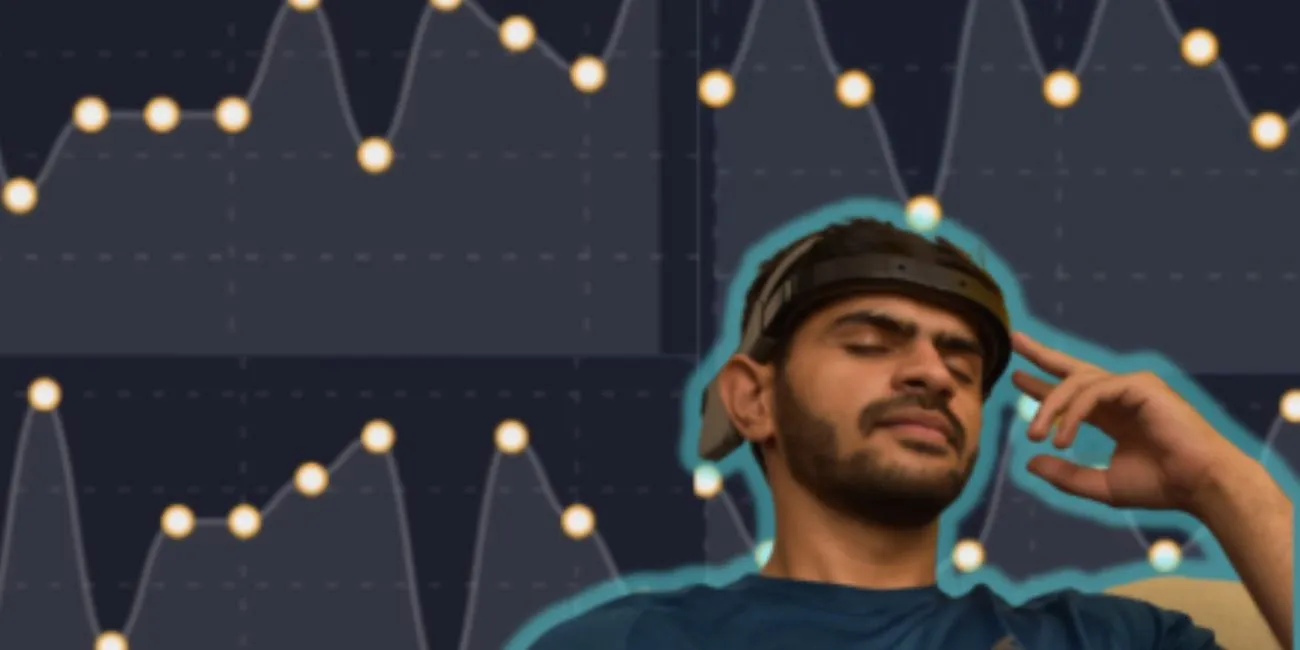Blogs >> User Guide to Read Focus-Distraction Graphs – Neuphony

How Different Minds Work?
Each one of us is different. We have different personalities, which is a result of the unique wiring of our brains. We think differently, feel differently, and this is why our brain activity is unique too.
But often, we fail to realize this. For each brain, there is a different focus- distraction level, PDR (post dominant rhythm), stress-calm levels, and so on. And this is why meditation and brain training methods should also be unique. But how do we really know what our type is?
Worry not! Neuphony has it all for you. Let us learn how and compare how different minds work.
Our brain communicates through the waves known as electrical impulses. When we plot these impulses against time, the graph obtained is known as EEG (electroencephalograph), or the brain waves, namely alpha, beta, gamma, delta, and theta.
With Neuphony, we can sense and sample these brain waves coming out from different sensors, that indicate a function and is related to a different performance characteristic.
After connecting the device and attaching the sensors properly, the application creates a brain map. This is basically a baseline calculation method, which calculates the focus for each person. In other words, it defines focus for you.
After the brain mapping step is done, the track player starts. This is the meditation session, which will determine the duration of focus of the subject throughout the session. And through this, the graphs are plotted.
We get multiple graphs, namely of focus v/s distraction, stress v/s cam, PDR (post-dominant rhythm which is unique for everyone), and mood. This is all that we can get from the graph.
How to Read a Focus and Distraction Graphs?
Let’s start by decoding some graphs:-
Note: On the x-axis is the time of the session and on the y-axis is the focus level. The section above the middle horizontal line is the focus, and the section below is the distraction.
Case study #1
Focus vs Time Graph
In the session, the person starts below the zone, but he gains control and tries to increase his focus. After reaching his highest point of attention, it starts to fall gradually (maybe due to some voice/sound/internal thought of the person/lack of concentration). But the person again begins to focus and tries to maintain it. His focus level is not very good during the session, and after this point, starts to slightly fall again. As we can see, it is not constant. So, the person couldn’t be focused for a long time/or might have some disturbing noises in the atmosphere/many things going on in the mind. But again, gets focused, and finally loses it at the end of the session.
The graph tells of someone who can gain a high concentration level but has a short attention span. He starts with distraction but gains focus immediately and reaches the highest level. He cannot focus on a particular thing or task for a long time but still tries to remain focused. At the start of the session, the person sat with the mind that he will be focused, this is why he was at the highest level of his focus. We can imply that when he finds something of interest, his concentration level is at its peak.
Case study #2
Focus vs Time Graph
The person starts with a weak focus and tries to gain it, which he does gradually. It falls down after holding for a long time, but again gets back at a good point, after which he loses the flow and focus falls down. His attention span is good in the middle of the session. This shows that the person can focus on one thing for a long time, is goal-oriented, and can-do work without distraction or frequent breaks.
Case study #3
Focus vs Time Graph
The graph shows that the person has a good focus level, without any drastic distractions by thoughts or outside environment. The overall focus is good, with a large attention span. Refer to the previous graph for the same.
Case study #4
Focus vs Time Graph
The person starts with a high focus level, which he holds for some time, but falls down considerably. He again comes in focus, holds it for a good attention span, and then becomes more focused on the thought, but it begins to fail. This pattern is observed thrice in the graph. He ends the session being focused. This pattern shows that even when his concentration level is falling, again and again, he can gain it back. This shows his resilience. Personalities like this can command bat problems, bounce back from difficult events and successfully adapt to difficult events and changes.
Case study #5
Focus vs Time Graph
Here in the graph, the direction of the curve keeps on changing. This shows that the given person has a monkey mind. He can’t focus on one thing for a long time, he needs frequent breaks or his focus shifts from one thing to the other. This might also be due to multitasking. Even though he has a monkey mind that is restless, he is resilient also, because he is able to come back to focus again and again even after falling down.
Conclusion
So as mentioned above, we are able to comment on the state of mind of the subject during the given duration of a meditation session. If we take the subject takes the sessions regularly, and keep track of the brain activity, we may be able to speak largely on the personality and characteristic traits. If there is visible repetition over time, we may consider that as a habit, which might help us in speaking about the personality too.
So, this is how brain activity can tell us about personality, as well as the personality type can help us find out the best meditation and brain training regime.
Long Term Meditators VS Non-Meditators
As it is visible in the graphs given below, we can analyze the difference between the minds of long-term meditators and non-meditators, through their Neuphony graphs.
The meditators in the first three graphs have started with a very good focus level, which they manage to hold for a good duration. This indicates a greater focus level and a good attention span. Though their focus score does not fall below a standard average mid-line, even if there is a little bit of divergence, they manage to bounce back to the previous focus level. This shows resilience. If we study this over time, we can comment on various personality traits such as determination, flexibility, observance, perseverance, persistence, attentiveness, concentration, obsession, occupancy, spiritedness, basic cognitive process, and so on.
The long-term meditators have a good focus level, attention span, and resilience.
Which means they have greater control of their mind.
The non-meditators graphs show a comparatively lower measure of the parameters.
What we can conclude from the given graphs is that with regular meditation, we can achieve the above-mentioned three parameters, i.e., more focus level, better attention span, and resilience.

